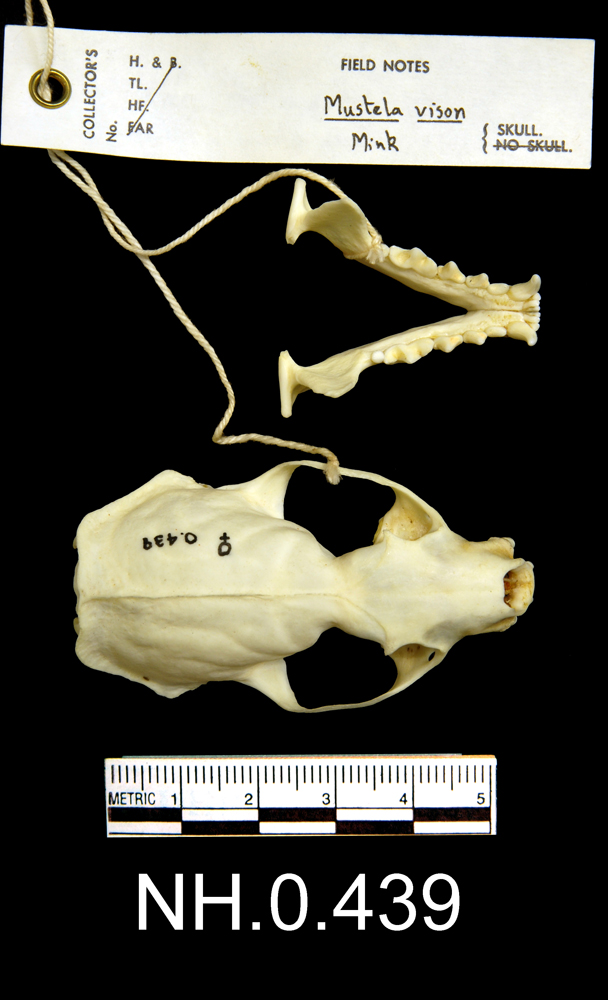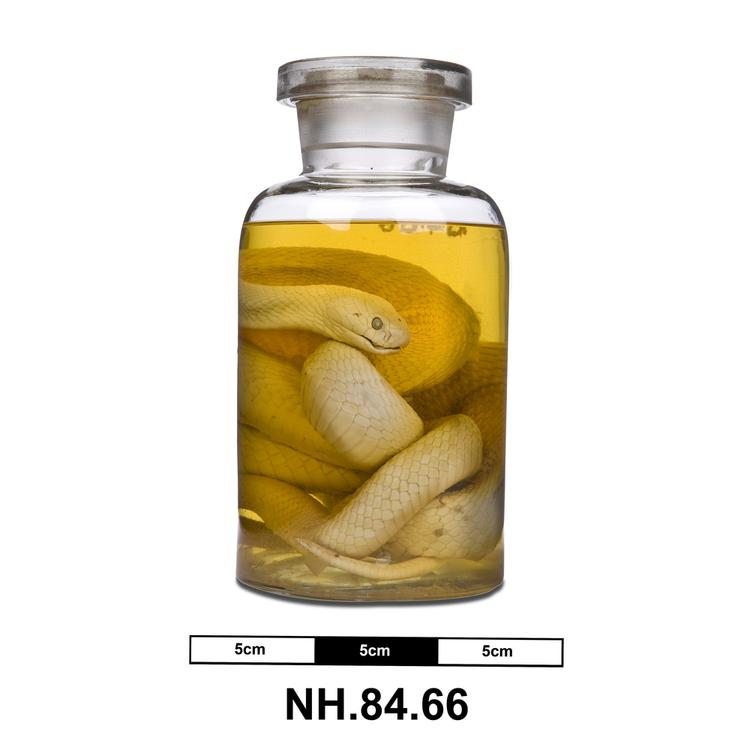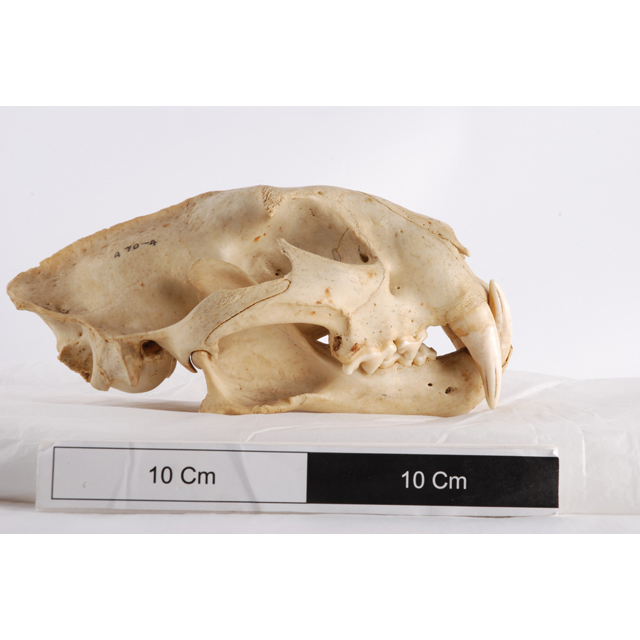Skeletal specimen. Dolphin cranium and lower jaw.
Dolphins locate their food with a special sense called ‘sonar’. They send out high frequency sounds and listen to the echo. Groups of dolphins will often work together to herd shoals of fish into a tight ball so they can be easily attacked. Dolphins teeth are cone shaped and are well suited for holding onto their slippery prey. Looking at the skull of the dolphin you can see two obvious features, The first is the many cone-shaped teeth filling the long snout; this is an ideal design for catching slippery prey.
The second feature of this skull is the huge spherical brain case. Dolphins are known to be highly intelligent animals but much of this large brain is dedicated to the dolphins’ specialised sense of hearing.
At the top of the skull is the ‘blow hole’. This is the nostril of the dolphin, from where it breathes air into its lungs (the nostrils are not at the end of the snout as with most other mammals).






